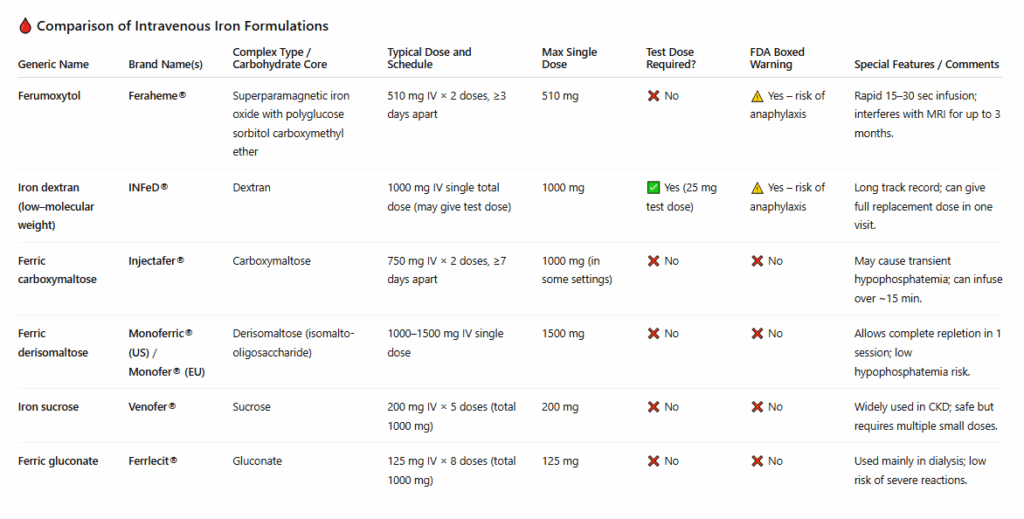IV Iron

- Feraheme® (ferumoxytol) and INFeD® (iron dextran) both carry boxed warnings for rare anaphylaxis.
- Ferric carboxymaltose and ferric derisomaltose allow large single doses, improving convenience.
- Iron sucrose and ferric gluconate are older, well-studied, and very safe but require multiple infusions.
- Ferric carboxymaltose commonly causes hypophosphatemia, whereas derisomaltose does not.
- Ferumoxytol is unique in being MRI-interfering and rapidly infused.

Match the generic with the brand name

Match the generic with the brand name

Match the IV iron formulation (Column A) to the key feature (Column B)

Match the IV iron formulation (Column A) to the key feature (Column B)

Your 29 yo female patient with iron deficiency anemia develops sudden flushing and warmth, as well as chest and back pressure within seconds of start of infusion of IV iron dextran. Which of the following is/are true (more than one answer may apply).
A 42-year-old woman receiving IV iron sucrose for iron deficiency reports flushing and a feeling of chest tightness within 1 minute of infusion start. Blood pressure and oxygen saturation remain normal. Which statement best describes this reaction?
True or false: Fishbane reactions are a type of CARPA?
The mechanism of a Fishbane reaction is most consistent with:
Can a patient who had a Fishbane reaction safely receive IV iron again?
Is premedication with antihistamines or steroids required for someone who has had Fishbane reactions?
Which of the following is a clear indication for intravenous iron therapy?
A patient with chronic kidney disease (CKD) and anemia is on erythropoiesis-stimulating agent (ESA) therapy. Which of the following best describes the role of IV iron?
Which of the following best summarizes general indications for IV iron?

Match the clinical scenario (Column A) with the appropriate indication (Column B).

Sort the following clinical scenarios into the correct category:

Which type of IV iron can interfere with MRI imaging for several weeks after infusion
Click for AnswerThe Ganzoni formula is used to calculate which of the following?
Which of the following best describes the expected hemoglobin (Hb) response after successful IV iron therapy in iron deficiency anemia?
